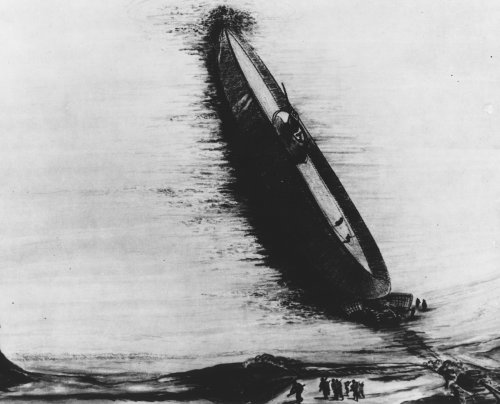The submerged tank landing ship (LSST) was sketched in 1955 by the United States Navy's Bureau of Ships (BuShips) for its "dream book." Powered by an S5W nuclear reactor, it would have attained 16 knots in landing trim and 12 knots submerged. It would have carried 500 troops and 500 tons of cargo, at a unit price of $85 million. The four-level arrangement provided two levels for troop berthing and messing, with the control room/attack center and ship's officers on the upper level (but with troop berths at the fore end of the upper level,) and stores and fresh water on the lowest level. Compensating tanks are shown at the fore end. The LSST could have beached at a keel slope of 1:50.
General Characteristics
Length: 565 ft.
Beam (maximum): 81 ft.
Light displacement: 8,000 tons
Surfaced displacement: 8,700 tons
Submerged displacement: 26,000 tons
SHP: 15,000
Surfaced speed: 16 kts.
Submerged speed: 12 kts.
Torpedo tubes: 2
Payload: 500 tons
Cost: $85 million
Source: US Submarines Since 1945: An Illustrated Design History by Norman Friedman, US Naval Institute, 1994.
General Characteristics
Length: 565 ft.
Beam (maximum): 81 ft.
Light displacement: 8,000 tons
Surfaced displacement: 8,700 tons
Submerged displacement: 26,000 tons
SHP: 15,000
Surfaced speed: 16 kts.
Submerged speed: 12 kts.
Torpedo tubes: 2
Payload: 500 tons
Cost: $85 million
Source: US Submarines Since 1945: An Illustrated Design History by Norman Friedman, US Naval Institute, 1994.


